Anglers Booking Team
The expert copywriters at Anglers Booking have meticulously crafted this article. Our dedicated team of writers provides valuable insights and information to enhance your angling experience.
 11 minutes read
11 minutes readPompanos are small fish, but they fight hard. Many anglers love catching them because of the strong pull and fast runs. These fish usually weigh under three pounds, but even with that fact, they still can test your gear and skill.
They are also great to eat, as their meat is soft, white, and mild. In many places, it is one of the most expensive fish on the menu. People say it tastes as good as Snapper or even better!

You can find Pompano from the U.S. East Coast to South America. They live in the Atlantic Ocean and the Gulf of Mexico. They like warm water, usually between 65°F and 75°F. For the same reason, they are commonly caught during fishing in Florida, but not only there.
In this guide, we will show you the best lures for catching Pompano. The right lure can make all the difference. Let's get started.
Pompanos are smart, reactive fish that don't bite at anything. They chase bait and quickly adjust to changing water conditions and light. To catch them, you must observe the conditions and select the appropriate lure. Also, it is crucial to match your fishing method to their behavior. Don't skip the sections below!
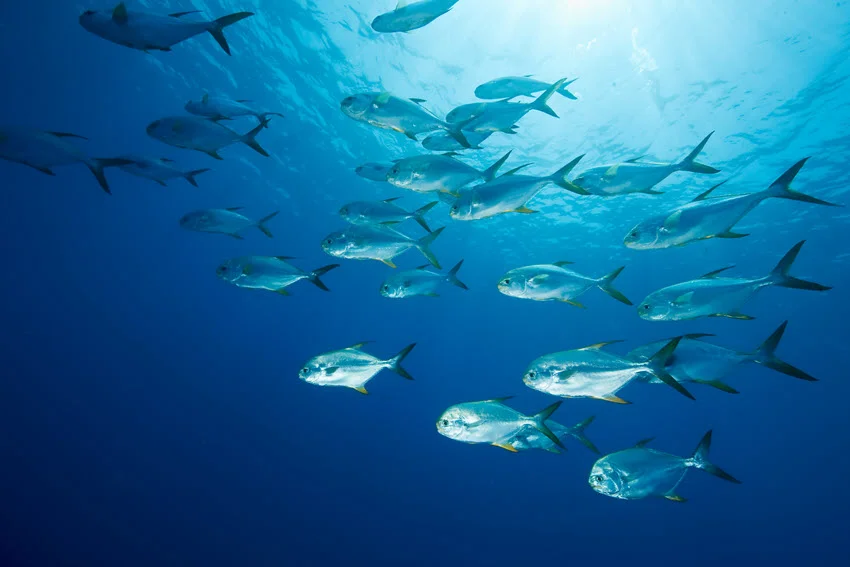
Pompano prefer warm, shallow waters with sandy bottoms. They are commonly found in surf zones. Beaches, inlets, oyster bars, and grass flats also serve as necessary feeding and resting areas. These habitats provide ample food and protection from predators.
Pompano feed mainly along the bottom. They use their strong jaws to flick through the sand and find hidden prey such as sand fleas, small shrimp, clams, and tiny crabs. Because they rely on sight and movement to locate food, they often stay in clear, moving water where prey is more active and visible.
During high tides, Pompano frequently move into inshore grass flats, where they can find abundant crustaceans and small fish. These flats provide both food and shelter, making them ideal for feeding during certain times of the day or season.
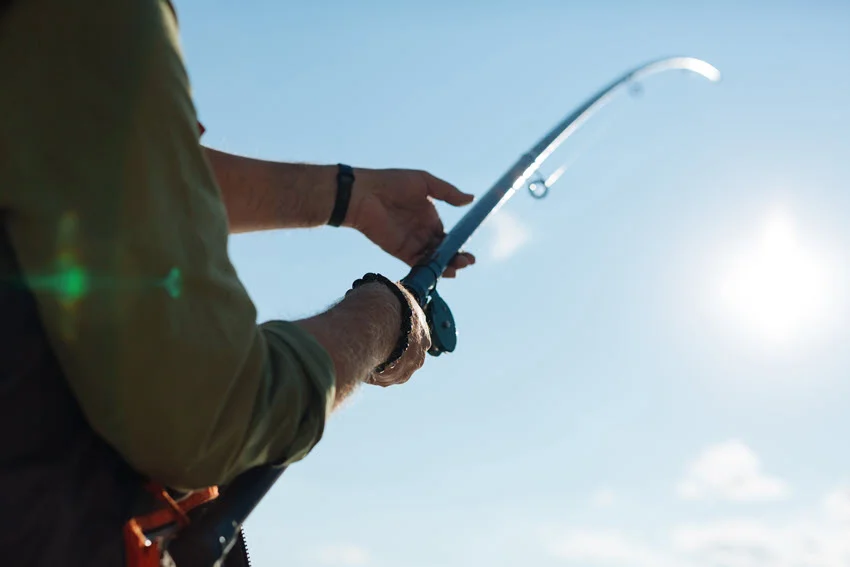
Pompanos are sensitive to water temperature and follow seasonal patterns. As the water cools, they migrate south. When it gets too warm, they move to calmer offshore waters. Below, we analyze when and where to fish for them.
No matter the season, early morning or late evening remain the best times to target Pompano. These periods are cooler, have less sunlight, and have more wave activity.
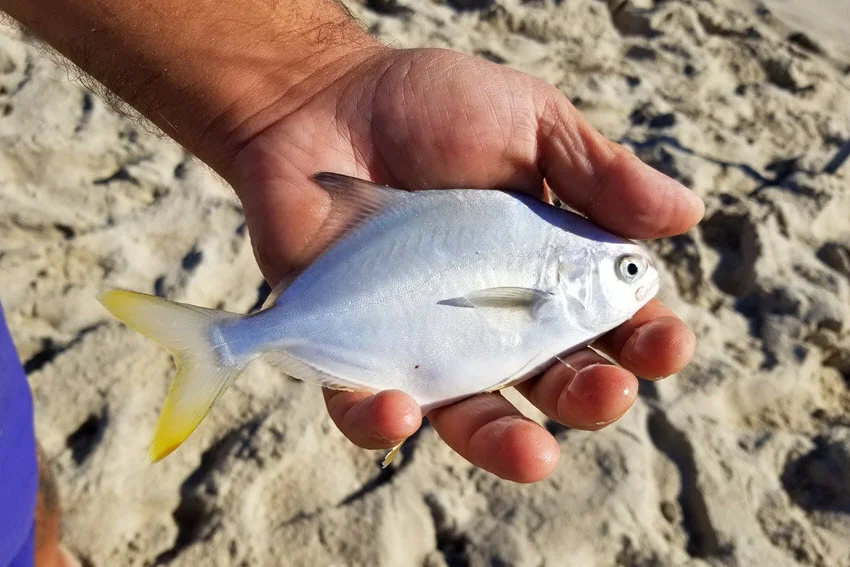
In this section, we will discuss where to find this fish and provide guidance on how to catch it. Please note that the conditions at each location may vary, which means you will need a different approach to fishing on each one.
Success with Pompano hinges on timing and presentation. Match your lure to the spot and season, keep it natural, and you'll be ready when the fish move in.
Choosing the right lure is key to catching Pompano. Your lure should match the prey and water conditions of your target. Below are the best lures to use for Pompano fishing.
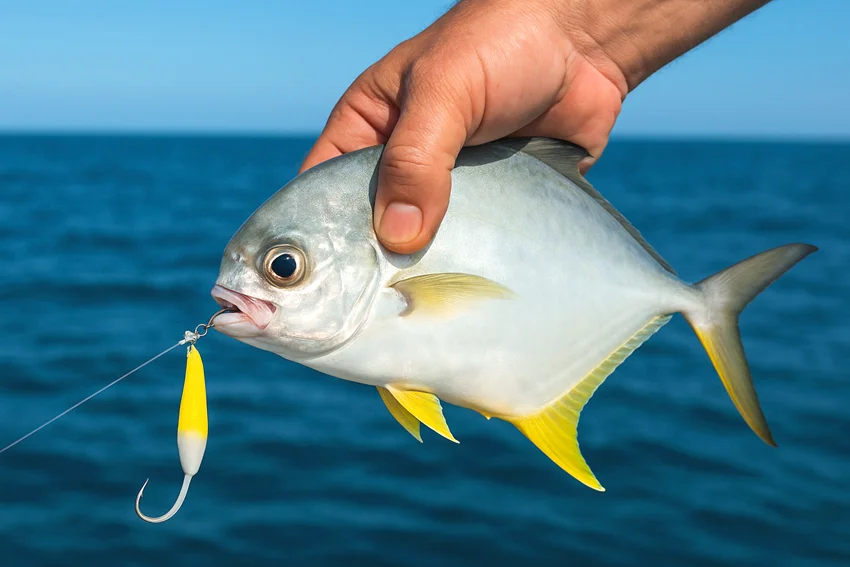
Pompano jigs stay near the bottom. Use them with or without a small teaser fly above the jig. Cast into troughs and retrieve slowly to keep it in the strike zone. These jigs shine in surf conditions and allow precise bottom contact. They're also easy to pair with small pieces of shrimp for added scent.

Spoons flash and wobble as they move, attracting nearby fish. They are effective for covering water and locating active Pompano quickly. Cast far, let it sink, then retrieve steadily. Use silver or gold in clearer water to reflect light and draw attention. These lures work best on sunny days with calm or light surf.
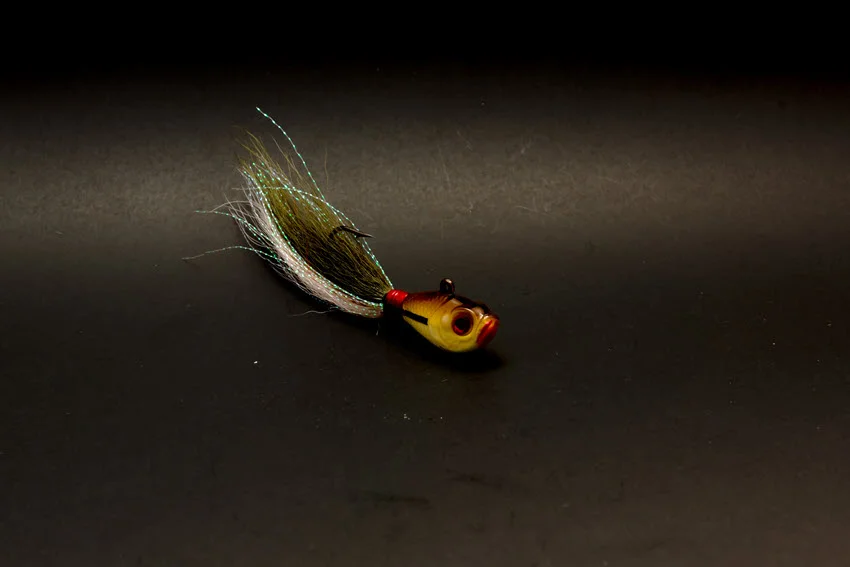
Bucktail jigs are simple but very effective. The hair adds motion, even when the jig is still. Use them in deeper water or when fishing passes with a stronger current. Their weight helps them stay near the bottom, where Pompano feed. Natural colors like white and chartreuse are often best in clear water.
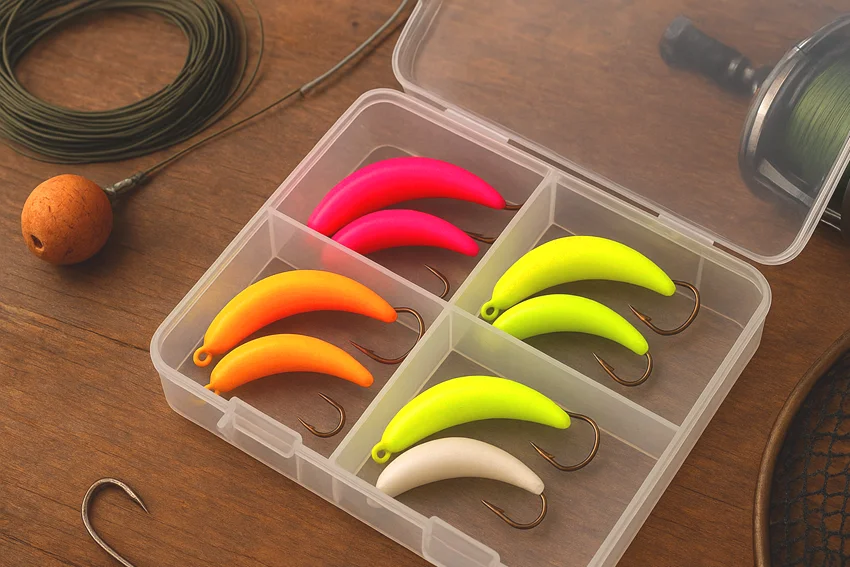
Banana jigs are one of the top lures for beach fishing. They bounce well on the sandy bottom. This lure looks like fleeing prey. Cast out and retrieve with short hops. Walk along the beach and repeat the motion. They work well in clear water. Bright colors work the best. Pink, orange, yellow, and light green often trigger more strikes.
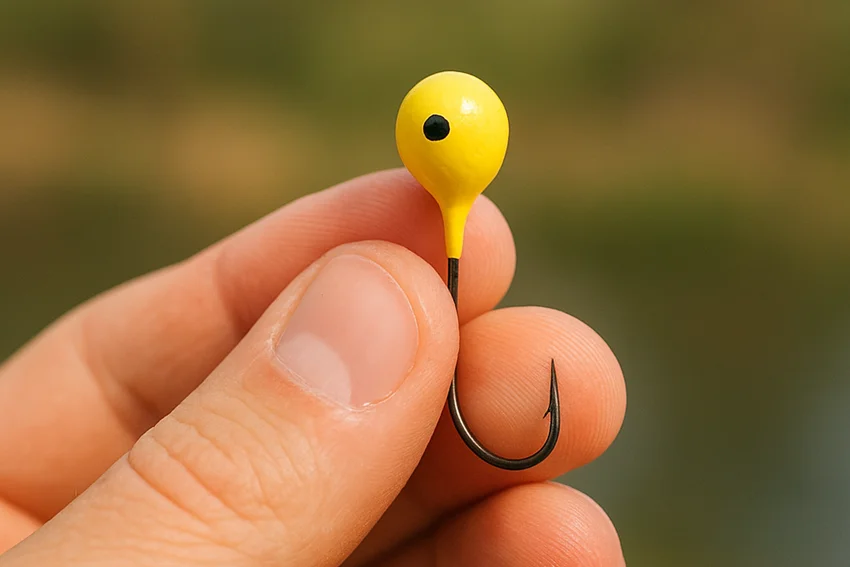
Egghead jig is heavy and shaped for strong currents. They drop fast and stay near the bottom. They are ideal for deep inlets or nearshore reef zones. Pair them with a teaser or small soft plastic for added appeal. They're best used on days with stronger surf or outgoing tides as their streamlined shape allows better control in rough water.

These soft plastics have been infused with added scent to trigger strikes. Use pink or orange jig heads. They work best in shallow surf on high tide. Cast into the trough. Make slow retrieves with tiny twitches. They are excellent for low-light conditions. Under those conditions, scent plays a more significant role in attracting fish.
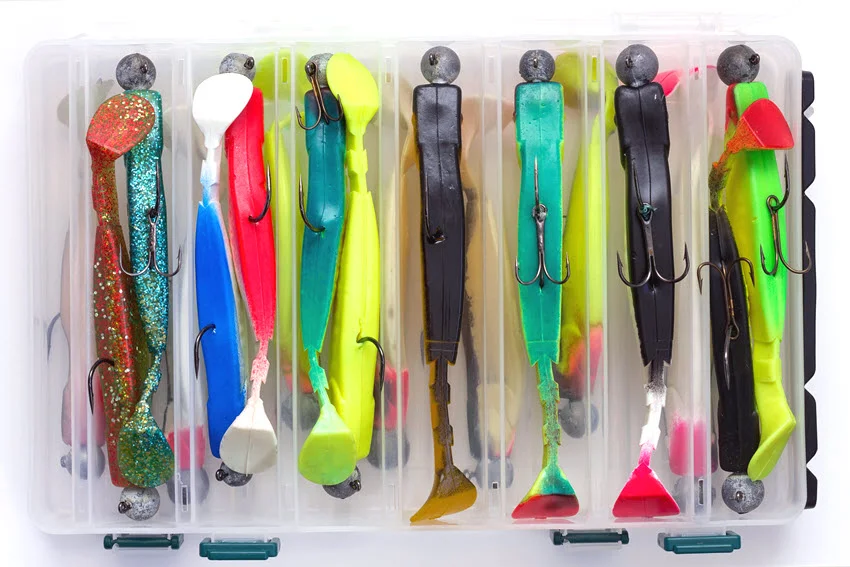
Soft plastic sandflea lures match one of the Pompano's favorite foods. Use them on a light jig head. Bounce them over sandy areas. They work great for beach and surf fishing. These lures could be very productive near sandbars. Try using them during calm surf with good sunlight to match natural fleas.
Pompano are very popular among anglers. You can catch them in many ways and places. Below are some of the best methods for catching Pompano.

Surf fishing is one of the most popular methods for targeting Pompano. It is often used along sandy beaches where these fish naturally feed. The best locations are areas where the waves are breaking and stirring up the sand. Productive spots include open beaches, sandbars, piers, and even bridges close to the surf zone. Popular baits are sand fleas, shrimp, or small pieces of cut bait.
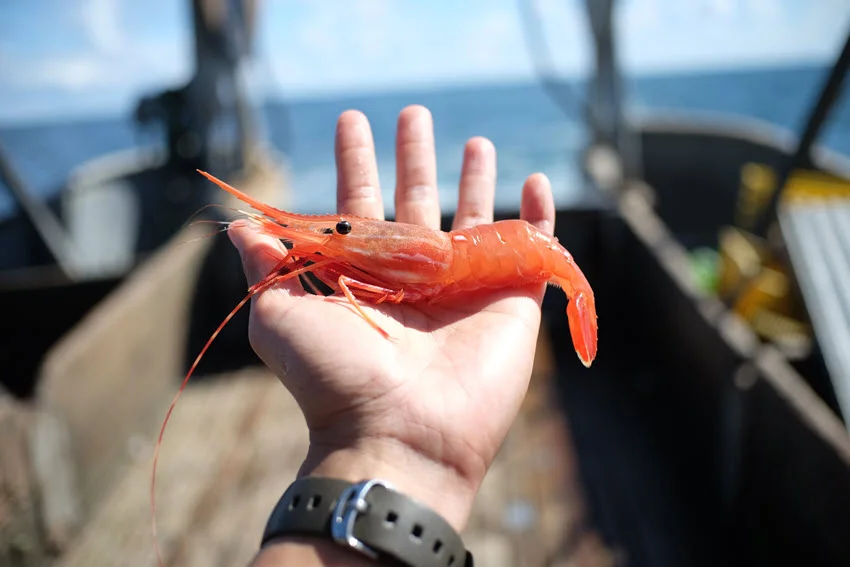
Using live bait is one of the most popular methods for fishing. When targeting Pompano, the best options are crabs or shrimp, as these closely match their natural diet. It's crucial to keep the bait near the bottom where Pompano feed. A simple rig with a circle hook and sinker works well, but many anglers prefer using a Pompano rig with floats or beads to elevate the bait slightly and attract attention in the surf.

When you use this technique, you must remember one important thing. The goal is to mimic the movement of natural prey along the sandy bottom. Bright colors (yellow, orange, green, pink) stand out in the surf and draw strikes. Varying your retrieve speed is important. Sometimes Pompano prefer a fast darting action. At other times, they respond better to a slow presentation. This method is ideal for quickly covering a larger area of water.

Fly fishing for Pompano is effective in shallow flats and near sandy drop-offs. Anglers should look for natural signs of activity, since Pompano often follow them to feed on dislodged prey. It is essential to present a small, weighted fly that resembles crabs or shrimp, and to cast it carefully in front of feeding fish. A slow, deliberate retrieve works best; using light tackle enhances the fight, making every hookup an exciting experience.
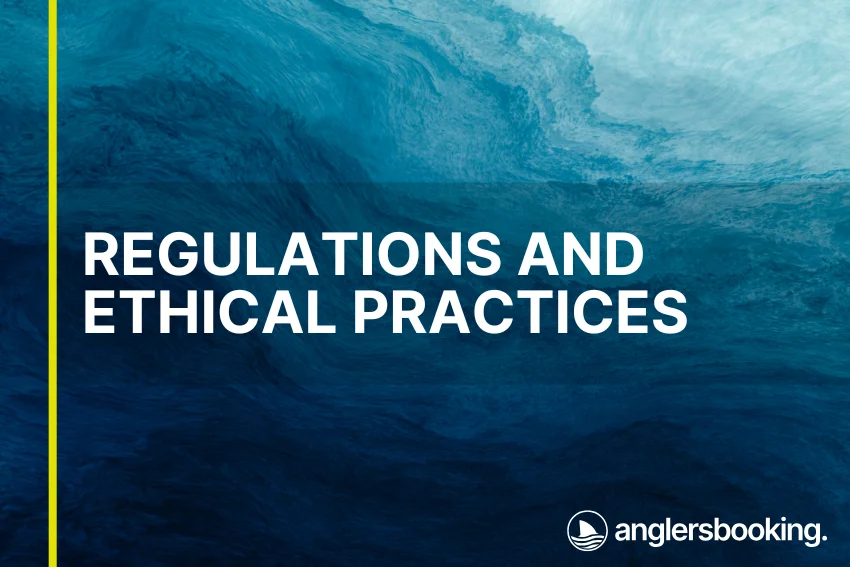
Understanding fishing regulations and ethical practices about specific fish species protects fish populations and ecosystems and promotes responsible angling practices.
Anglers Booking team
Fishing for Pompano can be a lot of fun. However, it's necessary to follow the rules to ensure the sustainability of the species. Respect for the fish is crucial, as the goal of these regulations is to protect them. Many states have specific size and bag limits for Pompano.
For instance, in Florida, the legal minimum size is 11 inches from the tip of the snout to the fork of the tail, and the daily bag limit is six fish per person. Always check your local regulations before fishing. These rules can change by season or location. Some areas may also require a saltwater fishing license.
If you catch a fish that is too small or you have already reached your limit, release it carefully. When touching fish, do that with wet hands. Do not squeeze it or drag it through the sand. Use a dehooking tool if necessary, and return the fish to the water as quickly as possible.
Pompano fishing is a fun activity. At the same time, it could be rewarding. These fish fight hard and taste great. To catch them, you need the right lures and the right timing. Try to find them on sandy beaches, inlets, and flats where they feed.
Use lures like banana jigs, shrimp imitations, and small spoons, fish during early morning and late evening, especially in spring and fall. With the right gear and a little practice, you are on your way to having a successful fishing day.
What has been your most memorable Pompano fishing experience, and what lure helped you catch your best fish?

The expert copywriters at Anglers Booking have meticulously crafted this article. Our dedicated team of writers provides valuable insights and information to enhance your angling experience.
Embark on unforgettable fishing adventures with us at Anglers Booking.
book your charterOctober 17, 2025
October 15, 2025
October 10, 2025
October 11, 2025
October 4, 2025
September 29, 2025
September 25, 2025
September 21, 2025

You're now part of our exclusive community. Get ready for premium content and updates straight to your inbox.
close
Subscribe to our newsletter and receive a selection of cool articles every week.
Please enter a valid email address.

Be the first to know when we're back in action.
Please enter a valid email address.
Leave a Comment
Your email address will not be published. Required fields are marked *
Thank you for your comment! It has been submitted for review and will appear on the site shortly.